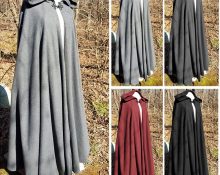
creativecommons.org
Today, patchwork products are ubiquitous - the technique involves using pieces of different fabrics to create a single, combined product. A patchwork blanket, a cover for an armchair or pouf, or a blanket for a sofa look bright and stylish. Patchwork is actively used by designers to create new, fashionable collections. Bags, shawls, coats and dresses made from pieces of different fabrics look great. For those who love sewing and handicrafts, mastering this direction will not be difficult. It is enough to learn the basic techniques of patchwork sewing to create exclusive things for your pleasure.
Types of patchwork by stitching method and type of flaps
There is more than one type of patchwork. The techniques differ in many principles. These are the material, design features, sewing method, seams used and other nuances. The most common patchwork techniques are:
- Japanese technique.Its peculiarity lies in the choice of material. Craftswomen use only natural, silk fabrics, which are quite expensive. The shape and size of the silk pieces can be any.
- Traditional way. This is a great option for beginners who want to understand the tricks and rules of patchwork. The components of any product of the craftswoman's choice will be patchwork blocks. They are based on simple geometric shapes. These can be triangles or squares sewn in a row. First you need to sew a group of shapes, then combine these blocks with each other. A single piece of fabric is sewn onto the reverse side - the base.
- Crazy method. In sewing, scraps of different sizes and shapes are used. Any stitches can be used for stitching. Such products are usually decorated with an abundance of decorative elements - buttons, appliqués, beads and others. This technique allows you to give free rein to your own imagination without being limited by boundaries.
- Knitted patchwork. The principle of stitching is fundamentally different from other approaches. Almost always, the flaps are sewn together with hand or machine stitching. Here a crochet hook is used to combine the parts.
- Quilting. To combine fragments of the product, only machine stitching is used. In this case, all the details seem to be quilted. This direction is actively developed in the field of creating bed linen - rugs, blankets, bedspreads. The two layers of fabric in the middle are often separated by insulation.

creativecommons.org
Technological map - patchwork, patchwork technique
As with any technique, patchwork has a number of specific rules that must be followed. Experts shared some recommendations for beginning needlewomen:
- When working with fabrics, it is better to use tailor's scissors.They are sharper and longer than regular models. However, they must not be used for cutting anything other than canvas.
- If the fabric is new, it should be moistened with water before creating a patchwork. The material will shrink to a certain level. Craftswomen call this process decatification. After moistening, the fabric is dried and ironed. Otherwise, when the finished product is washed, it may become deformed due to shrinkage.
- It is impossible to work in patchwork technique without an iron. If you don't have steam or a humidifier, you will have to use a wet cloth to iron the work.
- When marking, you can use chalk or soap. Using a ballpoint pen or crayon will result in marks that may appear on the front side of the finished item.
- Before starting work, it is advisable to sort the fabric by color. In most cases, six tones are used as a basis - green, blue, red, yellow, orange and purple. But it all depends on the chosen shades. First we put the light ones, then the dark ones.
- When cutting, the grain thread must be taken into account. Otherwise, there is a high risk of deformation. The material must be cut according to its direction. If the canvases are new, the edge is taken as a guide.
- To transfer the drawing onto the material, it is better to use soft pencils or carbon paper of different colors.
Patchwork rules - what the fabric should be
The result of the work largely depends on the quality and characteristics of the material. Many needlewomen prefer to make shreds from cotton fabrics. Their advantages are as follows:
- the material is easy to sew by hand and by machine;
- it does not change its color, preserving the colors;
- the fabric is easy to trim, the edges do not fray or fray;
- it has optimal weight and density;
- when sewing, the product will immediately take the desired shape and will not be deformed;
- The fabric will not shrink after washing.
The second popular option is pieces of linen fabric. The fabrics are quite wear-resistant, do not cause allergic reactions, and last a long time. Products made from flax allow air to pass through well, are quite warm and do not become electrified. Experienced craftsmen also make luxurious silk masterpieces. But it is quite difficult to work with, and the canvas is expensive.


 0
0





